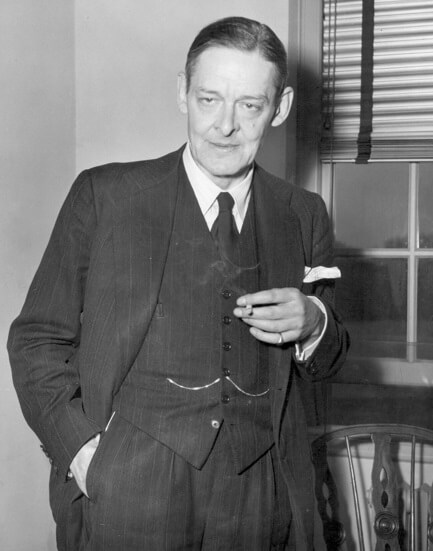Thomas Stearns Eliot OM was a poet, essayist, publisher, playwright, literary critic and editor. Considered one of the 20th century’s major poets, he is a central figure in English-language Modernist poetry. Through his trials in language, writing style, and verse structure, he reinvigorated English poetry.
Eliot also argued that the literary past must be integrated into contemporary poetry. But the poet must guard against excessive academic knowledge and distill only the most essential bits of the past into a poem, thereby enlightening readers. He use stream-of- consciousness to show the chaos in of the modern man’s thinking.
Here are some aspects that were unique about T.S. Eliot:
1. Modernist Poetry: Eliot is often associated with the modernist movement in poetry. His works, such as “The Waste Land” and “The Love Song of J. Alfred Prufrock,” broke new ground by employing innovative techniques and fragmented narratives. He experimented with form, language, and imagery, reflecting the fragmented and disillusioned post-World War I era.
2. Cultural References and Allusions: Eliot’s poems were often rich with cultural references and allusions to various literary, religious, and historical texts. He drew upon sources ranging from ancient mythology and the Bible to Dante’s “The Divine Comedy” and Shakespeare’s works. This intertextuality added layers of meaning to his poetry and required readers to engage deeply with the allusions to fully grasp the intended message.
3. The Objective Correlative: Eliot popularized the concept of the “objective correlative” in literary criticism. This term refers to the use of external objects and events to evoke specific emotions or states of mind in the reader. By carefully selecting and arranging images, symbols, and situations, Eliot aimed to create a precise and objective expression of emotion within his poetry.
4. Exploration of Spiritual and Psychological Themes: Eliot’s works often grappled with spiritual and psychological themes. He questioned the nature of existence, the search for meaning and purpose, and the moral and ethical dilemmas of modern life. His poetry delved into the complexities of human consciousness and the struggles of the individual in a fragmented and uncertain world.
Overall, T.S. Eliot’s unique contributions to poetry lie in his modernist approach, extensive cultural references, use of the objective correlative, and exploration of spiritual and psychological themes. His works continue to be studied and appreciated for their complexity, depth, and lasting impact on literary traditions.


